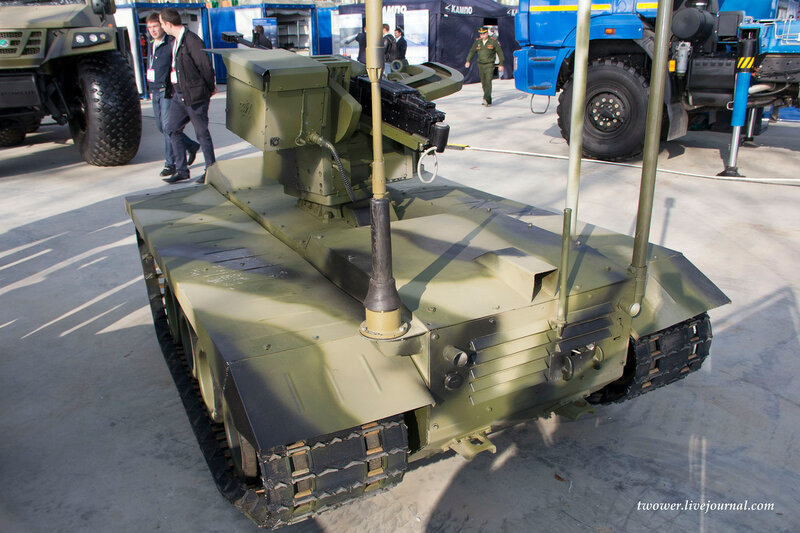 Big_Gazza Tue Oct 20, 2015 4:54 am
Big_Gazza Tue Oct 20, 2015 4:54 am
Article on RT regarding trials of software for control of autonomous militray robots:
https://www.rt.com/news/319082-russia-military-artificial-intelligence/
As with all military tech, the main issue is one of application - ie how to use these new toys effectively. I can foresee the use of autonomous robots as anti-saboteur systems for patrolling remote strategically vital facilities such as missile bases, the refuges used by mobile ICBMs or fixed missile warning radars, at least as an outer defense to supplement human-based security forces concentrated at the actual facilities. These areas would be openely and publically declared as closed installations, fenced in and sign-posted to warn of lethal safeguards in effect, and robots would roam the area primed to detect unauthorised entry, to remotely perform IFF, and then autonomously eliminate the threat should it fail to signal as a friendly.
The robots could be located near roads and the natural ingress areas, and programmed to patrol an area bounded by GPS co-ords, backed up by a form of inertial navigation based on its track movements if GPS becomes unavailable, and spend much of their time hunkered down in low power mode scanning with low light TV, imaging thermals and acoustic pickups. On detection of movement, the robot remains hidden but attempts to identify the target using radio IFF (which all authorised vehicles and personnel will need to carry). A lack of response within an acceptable timeframe results in "executive action".
In peacetime, such action could be remote imaging of the target and upload of images with embedded GPS coords to central command via a satellite or radio link. A human operator could then take control and operate remotely as needed.
In wartime, the robot would alert command as above, and then, depending on the DEFCON level, it could either (a) fire a warning shot and broadcast a pre-recorded PA message, or (b) go weapons-hot and eliminate the target without warning, choosing between a HMG for personnel and light vehicles, or ATGMs for anything larger as automatically determined by its onboard threat evaluation criteria.
In such a scenario, robots would be EXCELLENT security guards. They never get tired, never get bored, never suffer from attention deficits, never get cold or hungry, and always obey orders to the last letter. As long as their on-board power systems can sustain them, they can stay in the field and remain online for weeks or months at a time, especially if they spend most of their time "lurking".
This raises the question of power systems, as they will invariably require electrical power for transmission and sensor/weapons systems. I can foresee the use of VLRA batteries (or similar) for their superior low temperature tolerance, coupled with a high-efficiency liquid fuelled combustion engine for battery charging duties and activities requiring peak power consumption (eg high speed pursuits). Its also seems feasible to provide automated refuelling facilities where robots can return to fill their tanks as needed (or even a refueller robot that can rendevous with a combat model if required).
The only limit here is human innovation and political will. There will doubtless be criticism from those who fear the "killer robots" of Cyberdyne Systems but the key to the technologies acceptance will be in applying the tech in the right areas. Defensive security systems will be perfectly acceptable for vital strategic and national defense facilities where it is reasonable to assert that to trespass is to invite a quick death, whether it by robot or human soldier...












